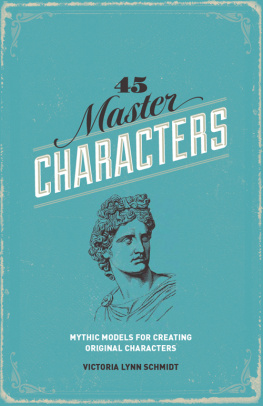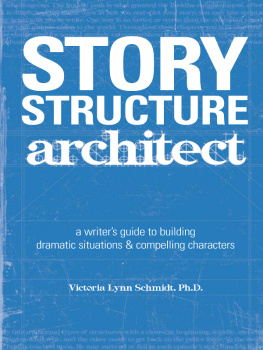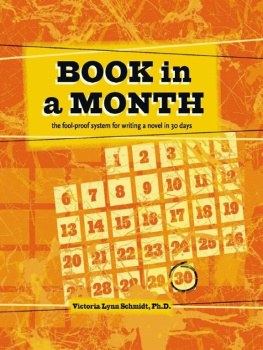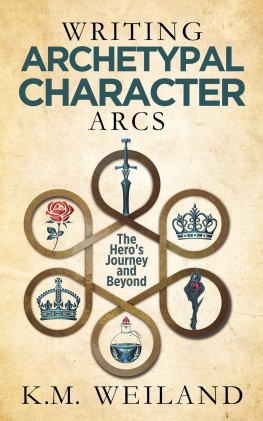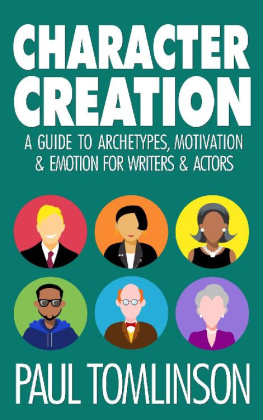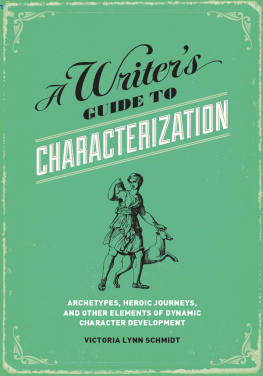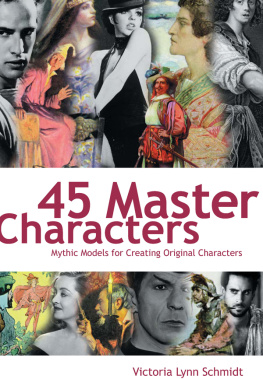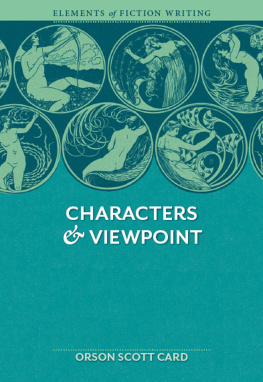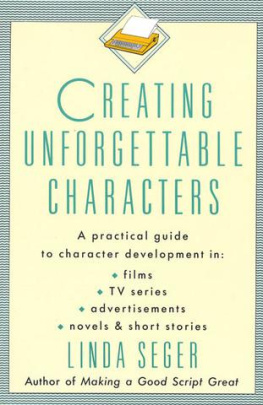INTRODUCTION
W hen I wrote this book ten years ago, I never dreamed it would be on shelves this long, available worldwide, and translated into several languages. Im honored that so many have found it, and my other books in this series, so useful.
You never know how your work might touch others. You just have to speak from the heart with the intention of helping people and things fall into place. Too often writers write what they want to write about instead of thinking about what their readers need. I discuss this in detail in my book Advanced Writing Techniques, but suffice it to say, this is a major stumbling block for most writers out there. If you want your work to stand the test of time give as much as possible to your readers, teach them, help them, guide themYes even when it comes to fiction writing.
This new edition has with it a 46th character that you can download from the Writers Digest site www.writersdigest.com/character-archetype-46. For several years now, some major players have come into our collective psyche, that of the Game Changer and Manipulator. These characters are inspired by the Messiah archetype and offer a new view on those who help, as the Messiah does, but they do so with regular human motivations, abilities, and dysfunction.
You can see these new characters are very timely and very much on readers minds. Using them, and the archetypes presented here, in your stories in some way, helps your readers make sense of their world, and helps them address, explore, and deal with current situations in life. Something most readers seem to long for when picking up a book.
So welcome to the new edition of 45 Master Characters. I hope you are inspired to build well-rounded characters that readers everywhere can relate to and learn from.
CHAPTER 1
WHAT ARE ARCHE
TYPES, AND WHY
SHOULD WRITERS
USE THEM?
Archetype: Image, ideal, or pattern that has come to be considered a universal model. Archetypes are found in mythology, literature, and the arts, and are largely unconscious image patterns that cross cultural boundaries.
Encarta
W hy should you use archetypes when designing a story? In my experience, almost every writer comes face-to-face with what I call the page thirty blahs. Youre writing your novel or screenplay. You have a wonderful idea. You spend days outlining and writing the first thirty pages. Then suddenly something happens. You lose steam. The pages get harder and harder to write. The momentum you had going slows down. Writers block looms in the distance, and you lose excitement in the masterpiece youre writing.
You think to yourself, Maybe the premise wasnt that good after all? Maybe I should work on a different story? This one just wont move.
Dont give up on your story. The good news is that most of the time the problem isnt with your story but with your characters. How can your story move forward if your driving forcecharacteris running on empty? If you think of your character in terms of the librarian stereotype, you only get a general idea of the character. It doesnt tell you anything about her motivations, goals or fears. How can you make new, exciting discoveries about your character if shes nothing but a stereotype or a blank page in your mind? You may have plot points, but did you think about how your character will react to the situations those plot points put her in? This reaction drives the story forward, not the plot points. A character doesnt decide to go into a burning building because thats what your plot point says he should dohe goes inside because its in his nature to do so.
Have you heard the story of The Scorpion and the Frog? A frog comes upon a scorpion and pleads for his life. The scorpion says he will not kill the frog if the frog takes him across the river. The frog asks, How do I know you wont kill me as I carry you? The scorpion replies, If I were to strike you, we would both surely die. Thinking it over, the frog agrees and halfway across the river the scorpion strikes the frog in the back. As they both start to drown, the frog asks, Why did you strike me? Now we will both die. The scorpion replies with his last breath, Because it is in my nature. What is in the nature of your character? Using archetypes can help you discover the answer to this question.
Luke SkywalkerDorothy
XenaCaptain Ahab
When you think of these characters, almost immediately, a very real sense of who they are jumps out at you. They are not bland one-dimensional characters but real people we can relate to. They invoke strong emotion in us; we want to be just like them or we want to be completely opposite. The stories they inhabit are not what make them memorable; what makes them memorable is the depth of their character, their three-dimensionality. Not every character has to be noble and perfect; Xenas dark side makes her complex, human, and interesting.
All of these characters embody a universal archetype, which helps them to inhabit a strong character arc. A character arc shows the changes a character goes through during a story. Every great protagonist learns and grows from her experiences within a story. Your character needs to emerge at the end of your story as a new person who has learned something from her journey.
The master archetypes discussed in this book are grouped into thirteen male and female supporting characters and thirty-two male and female heroes and villains. In addition to these profiles, youll find information on the archetypal patterns for thirteen supporting characters.
Luke Skywalker (Mark Hamill) in Star Wars can be seen in the Male Messiah archetype, while Captain Ahab from Moby-Dick is seen in the King. Dorothy (Judy Garland) in The Wizard of Oz definitely embodies the Maiden archetype, while Xena (Lucy Lawless) in Xena: Warrior Princess fits the Amazon perfectly. Although these characters are much more than their archetypes, archetypes inspire the discoveries and details that make them interesting.

